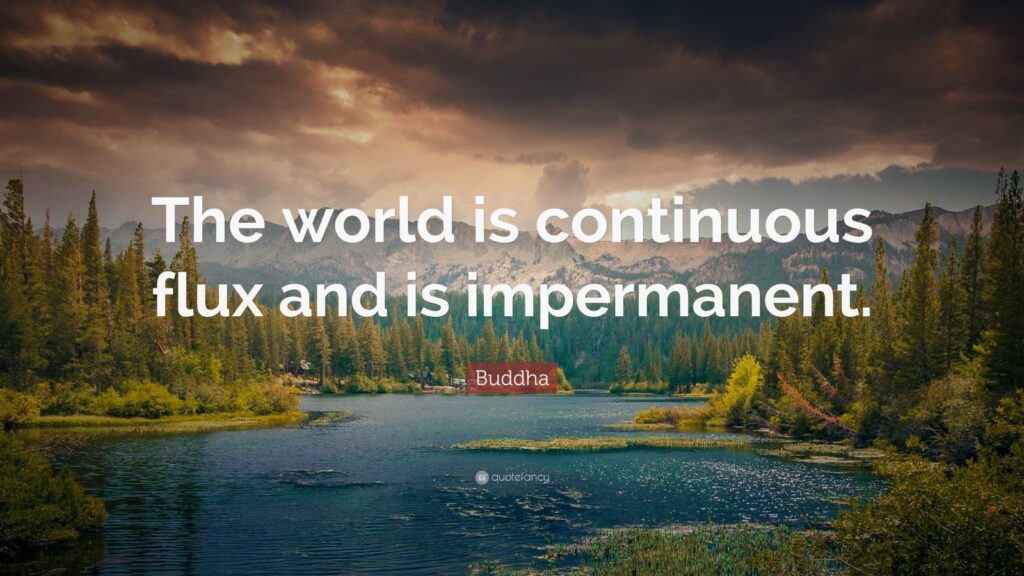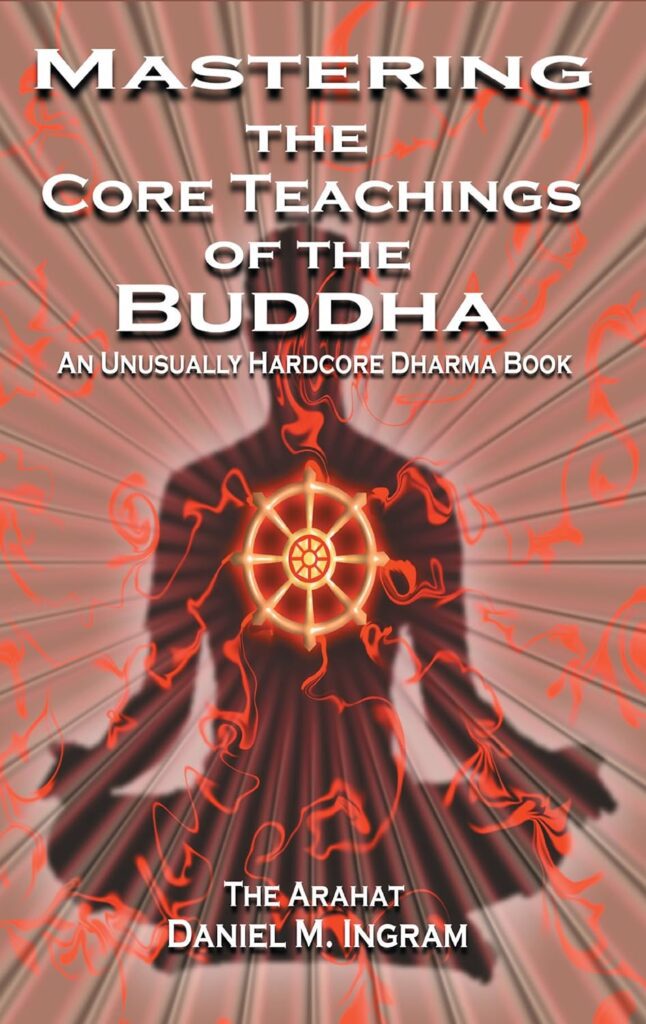2 – The Three Characteristics – Impermanence, Dissatisfactoriness, and No-self

The three characteristics of Impermanence, Dissatisfactoriness, and No-self
are so central to the Buddha’s teachings.
Every single time I say,
“Understand the true nature of things,”
what I mean is,
“Directly perceive the three characteristics.”
To perceive them thoroughly and directly is to be Awakened.
The big message here is: drop the stories.
Find a physical object like the breath, the body, pain, or pleasure,
some feeling of resistance you may be experiencing, etc.,
and train yourself to perceive the three characteristics precisely and consistently.
Drop to the level of bare sensations.
This is vipassana, insight meditation, the way of the Buddhas.
All the “opening to it”, “just being with it”, “letting it go”, and so on
are quite important, as we will see later, but insight meditators must—I repeat,
must—investigate the following:
IMPERMANENCE
All experienced phenomena, whether physical or mental, inner or outer,
are impermanent.
This is one of the most fundamental teachings of the Buddha
and the second-to-last sentence he uttered before he died:
All phenomena are impermanent!
Work out your salvation with diligence!
In his last words, he said
“Everything you need to know, is to do insight practices.”
Things come and go.
Nothing lasts for even a microsecond.
Absolute transience is truly the actual nature of experiential reality.
However,
when doing insight practices,
it just happens to be much more useful to assume
that things are only there when you experience them
and not when you don’t.
Thus,
the gold standard for reality when doing insight practices is
the sensations that make up your reality in that instant.
Sensations that are not there at that time are not presumed to exist,
and thus
only sensations arising in that instant do exist,
with “exist” clearly being a problematic term,
given how transient sensations are.
In short,
most of what you assume as making up your universe
doesn’t exist most of the time,
from a purely sensate point of view.
This is exactly, precisely, and specifically the point.
Knowing this directly leads to freedom – the ultimate Spiritual Liberation.

When doing insight practices:
Accept that things you do not experience directly
do not exist in that moment.
When doing basically everything else,
accept they probably do.
When practicing insight meditation:
It is far better to perceive one sensation arise and pass away.
What do I mean by this?
I mean that sensations arise out of nothing, do their thing, and vanish utterly. Gone. Entirely gone.
Then the next sensation arises, does its thing, and disappears completely.
We are typically quite sloppy about
distinguishing between physical and mental sensations
(memories, mental images, and
mental impressions of other physical or mental sensations).
These two kinds of sensations alternate,
one arising and passing and then the other arising and passing,
in a quick but perceptible fashion.
Being clear about exactly when the physical sensations are present
will begin to clarify their slippery counterparts—flickering mental impressions—
that help co-create the illusion of continuity, stability, or solidity.
Immediately after a physical sensation arises and passes
is a discrete pulse of reality that is
the mental knowing of that physical sensation,
here referred to as “mental consciousness”
(as contrasted with the problematic concept of “awareness”
Each one of these sensations
(the physical sensation and the mental impression)
arises and vanishes completely before another begins,
so it is possible to sort out which is which with relatively stable attention
dedicated to consistent precision and to not being lost in stories.
This means that the instant you have experienced something,
you can know that it isn’t there anymore,
and whatever is there is a new sensation that will be gone in an instant.
There are typically many other momentary sensations and impressions interspersed with these, but for the sake of practice,
this is close enough to what is happening to be a good working model.
Given that you now know that sensations are vibrating,
pulsing in and out of reality, and that, for the sake of practice,
every sensation is followed directly by a mental impression,
you now know exactly what you are looking for.
~~~
You have a clear standard.
If you are not experiencing it, then stabilize the mind further,
and develop more clarity about
exactly when and where there are physical sensations.
Spend time with this, as long as it takes.
The whole goal is to experience momentariness directly,
that is,
things flickering, and what those things are
doesn’t matter one bit!
How freeing!
~~~
Here’s a quick trick. If you count, “one, one-thousand”, at a steady pace,
that is about one second per “one, one-thousand”.
Notice that it has four syllables.
So, you are counting at four syllables per second, or 4 Hertz (Hz),
which is the unit of occurrences per second.
If you tapped your hand each time you said or thought a syllable,
that would be four taps per second.
Try it! Count “one, one thousand” and tap with each syllable.
So,
you now know you can experience at least eight things in a second!
You experienced the four syllables and the four taps that went along with them.
You probably experienced all sorts of other things also, like sights, sounds,
other physical sensations, and a lot more during that one second.
Yay!
That is insight practice.
You are already up to at least eight sensations per second.
Yay, you!

You don’t know quite what the next return or wave is going to be like,
so pay attention,
keep the mind on the pulse of the sensations of your world
just as you would on the wave or ball, and keep playing!
I highly recommend this sort of speed in practice
not only because that is how fast we must perceive reality to awaken,
but also because
trying to experience one to ten sensations per second is challenging and engaging.
Because it is challenging and engaging,
we will be less prone to getting lost in thoughts
rather than doing insight practices.
~~`
Our minds have the power to perceive things extremely quickly,
and we actually use this power all the time to do such things as read this book.
If you don’t use that massive resolving power,
you are likely to quickly get really bored and wander off
to something more interesting.
In the last exercise, I take on thoughts directly.
I know that the sensations that make up thoughts
can reveal the truth of the three characteristics,
so
I have no fear of them; instead,
I regard them as more glorious opportunities for gaining insight.

Again,
sitting quietly in a quiet place with eyes closed,
I turn the mind to the thought-stream.
However,
rather than paying attention to the content as I usually do,
I pay attention to the ultimate nature of the numerous sensations
that make up thoughts:
impermanence.
I may even make the thoughts,
which are typically occurring in the general region of my head,
more and more intense just to get a good look at them.
It is essential to try to perceive how you experience thoughts at a sensate level,
otherwise you will likely flounder in their content.
What do thoughts feel like?
Where do they occur?
How big are they?
What do they look like, smell like, taste like, sound like, feel like?
How long do they last?
Where are their edges?
~~~
Only take on this practice if you are willing to try to work at the level of
trying to discern what thoughts actually are
rather than what they mean, represent, or imply.
If we begin to explore carefully,
we will realize that thoughts are made of many types of
sensations, sounds, sights, physical feelings, even tastes and smells,
but they will often, though not always,
be associated with one predominant sense door.
If my thoughts are more auditory, as in inner talk,
I begin by trying to perceive each syllable of the current thought
and then each syllable’s beginning and ending.
If they are visual, as in mental images,
I try to perceive every instant in which a mental image presents itself.
If they seem physical, such as the memory of a movement or bodily sensation,
I try to perceive exactly how long each little sensation of this memory lasts.
This sort of investigation can be fairly easy to do and yet is quite powerful.
Things can also get odd quickly when doing this practice,
but I don’t worry about that.

Sometimes thoughts can begin to sound like the auditory strobing section
of the song “Crimson and Clover”,
where it sounds like they are standing at a spinning microphone.
Sometimes the images that arise internally can begin to flash and flicker.
Sometimes our very sense of attention can begin to strobe.
This is the point!
The sensations that imply a mind and mental processes
are discontinuous and fleeting.
~~~
Hopefully these exercises will give you some idea about
how we might practice understanding impermanence.
Impermanence is a quality whose clear perception leads to wisdom,
so just understanding this again and again can be enough
to drum it into our thick heads, debunk the illusion of continuity,
and once this is drummed into our thick heads we are freer.
This can be a subtle business, so be patient and persevere.
Remember all three trainings of morality, concentration, and wisdom.
Following flickering sensations and understanding the other two characteristics of
suffering and no-self that they manifest
can be a powerful and direct cause for deep insights and awakenings.

Buddha’s step by step instructions to obtain Enlightenment
as Inspired and refined by The Arahant Daniel M. Ingram.